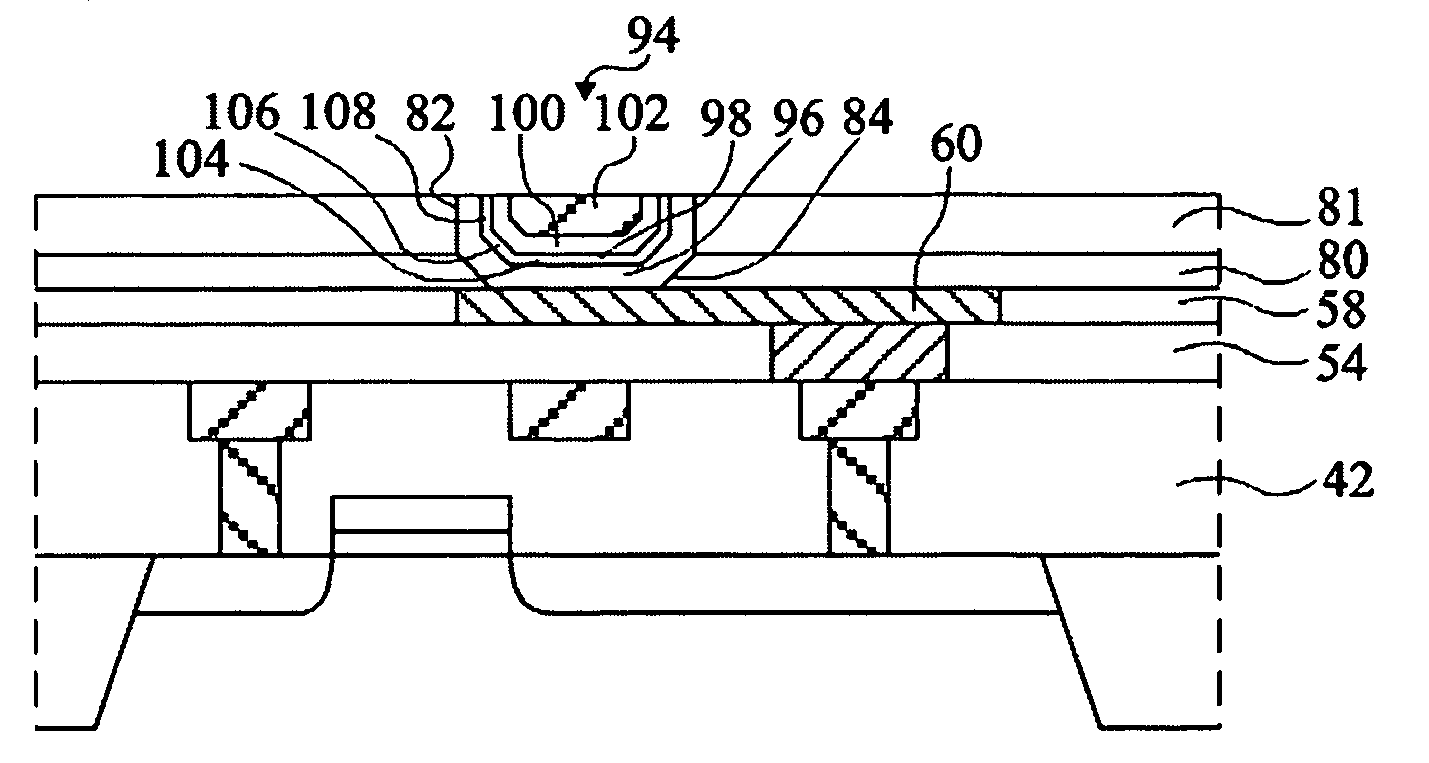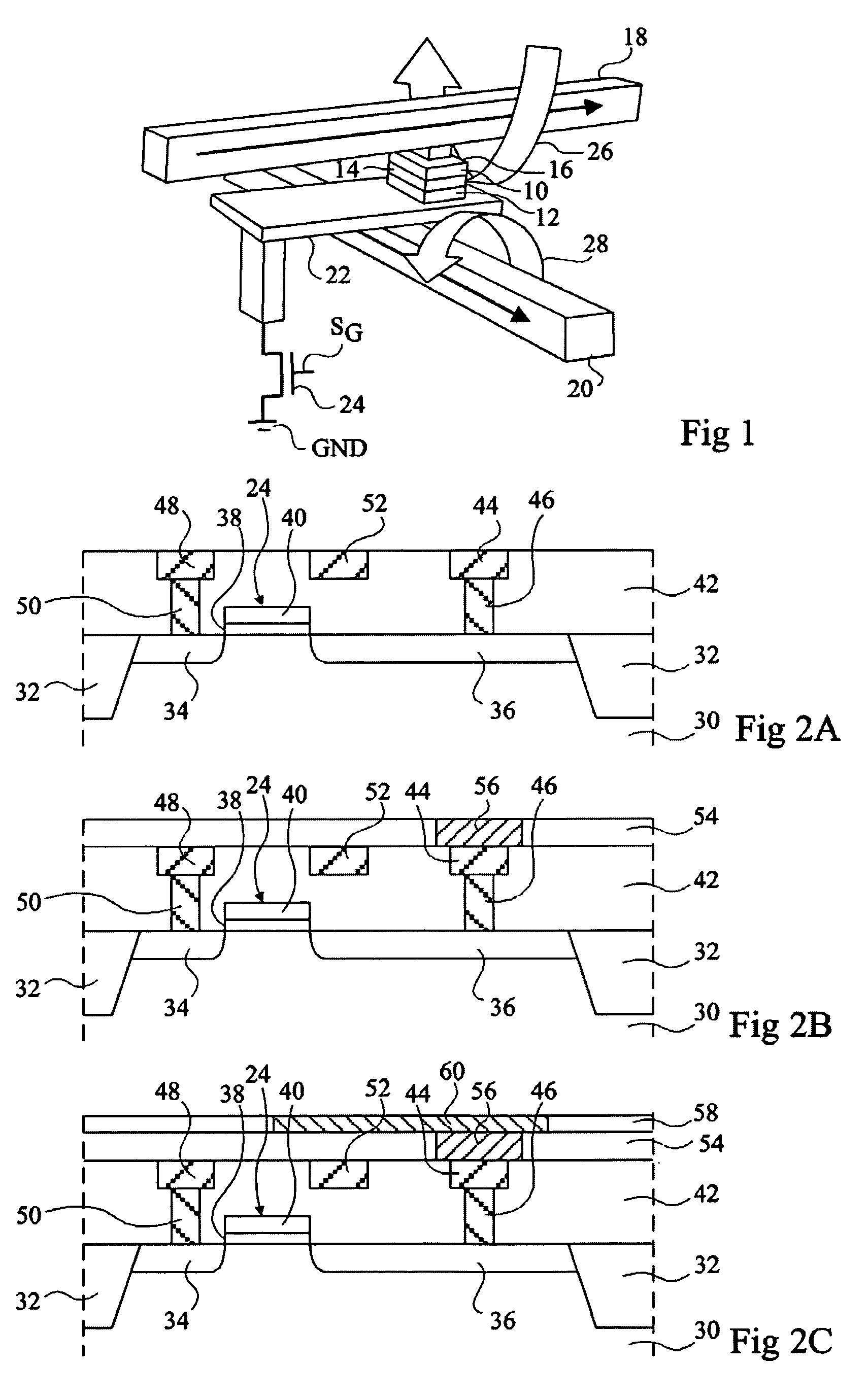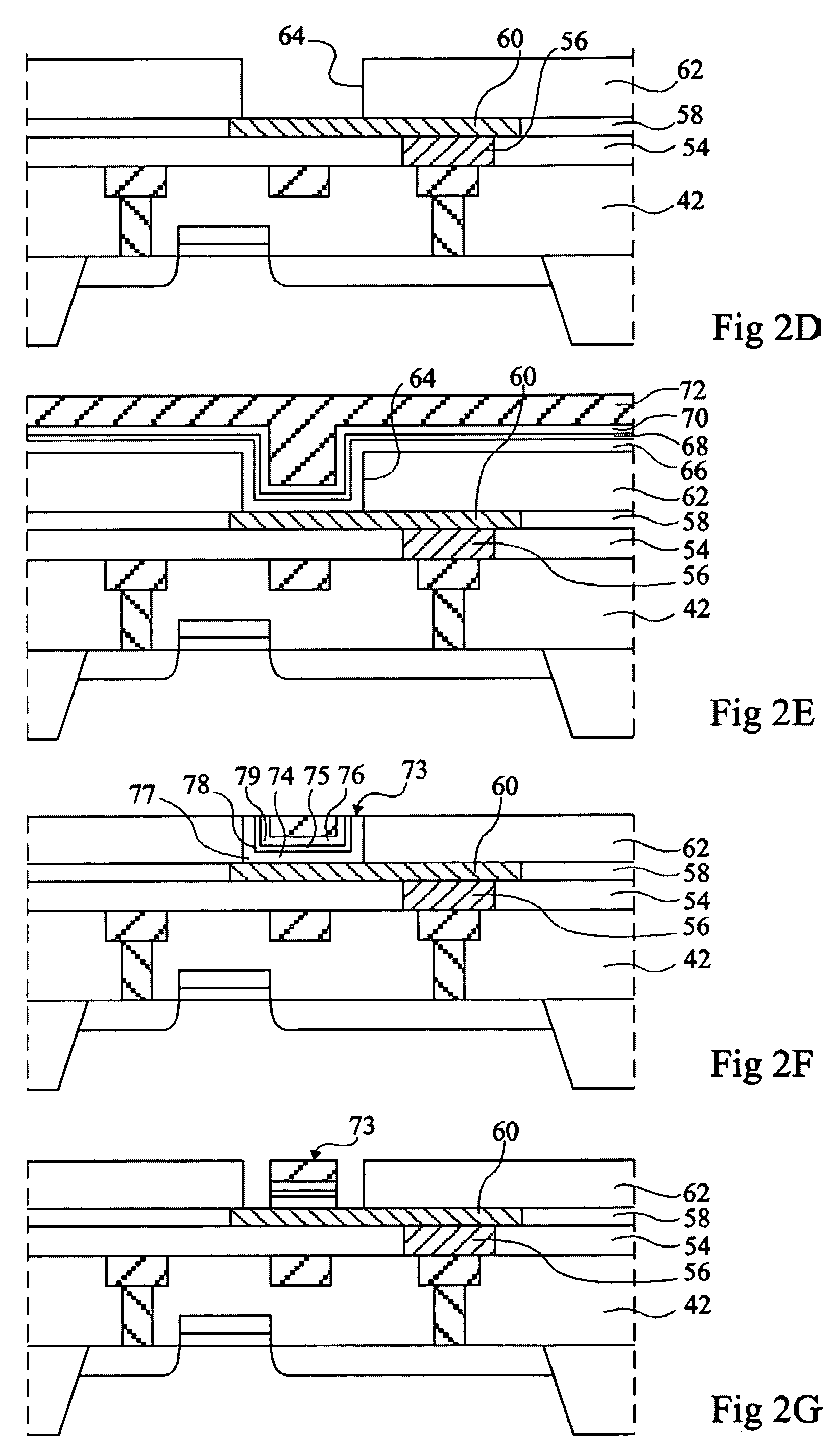Magnetic RAM
a random access memory and magnetic technology, applied in the field of magnetic random access memory or mram, can solve the problems of soiling of the etch chamber, material etching by rie-type etching tends to be less reactive, and the material generally used to form the memory elements is little reactiv
- Summary
- Abstract
- Description
- Claims
- Application Information
AI Technical Summary
Benefits of technology
Problems solved by technology
Method used
Image
Examples
Embodiment Construction
[0036]For clarity, the same elements have been designated with the same reference numerals in the different drawings and, further, as usual in the representation of integrated components, the various drawings are not to scale.
[0037]A first example of a process according to the present invention for manufacturing a magnetic RAM memory element will now be described in relation with FIGS. 3A to 3E. The initial steps of the first method example correspond to the steps previously described in relation with FIGS. 2A to 2C.
[0038]FIG. 3A shows the structure obtained after a step of deposition of two insulating layers 80, 81 formed of different materials on the structure of FIG. 2C. It may be a nitride layer 80 and an oxide layer 81. A recess 82 is etched through the entire depth of oxide layer 81. Nitride layer 80 may behave as a stop layer in the etching of recess 82. The selected etching is such that recess 82 has substantially straight sides.
[0039]FIG. 3B shows the structure obtained aft...
PUM
 Login to View More
Login to View More Abstract
Description
Claims
Application Information
 Login to View More
Login to View More - R&D
- Intellectual Property
- Life Sciences
- Materials
- Tech Scout
- Unparalleled Data Quality
- Higher Quality Content
- 60% Fewer Hallucinations
Browse by: Latest US Patents, China's latest patents, Technical Efficacy Thesaurus, Application Domain, Technology Topic, Popular Technical Reports.
© 2025 PatSnap. All rights reserved.Legal|Privacy policy|Modern Slavery Act Transparency Statement|Sitemap|About US| Contact US: help@patsnap.com



